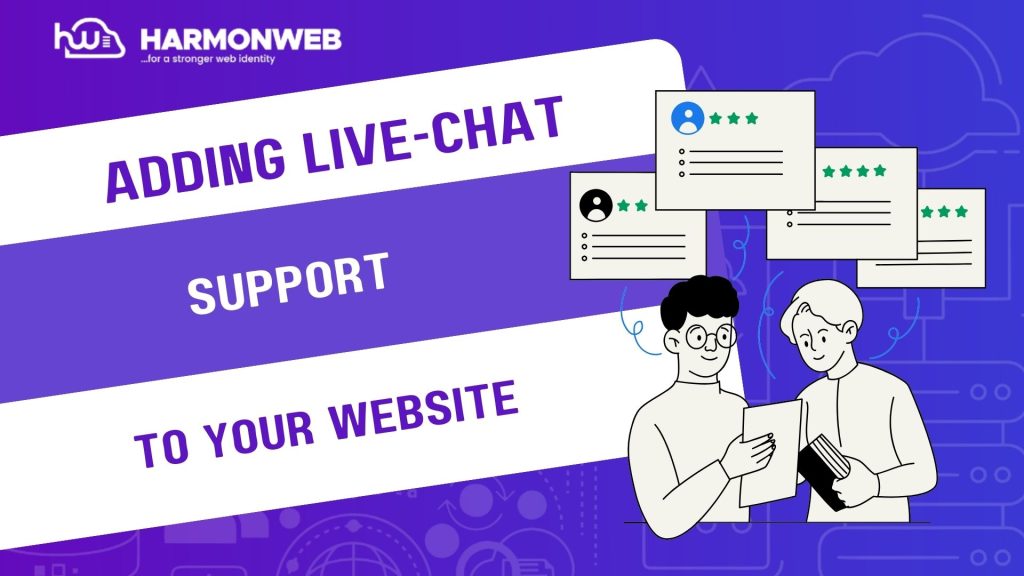In today’s fast-paced digital world, customers expect instant answers. Long email response times or slow ticket resolutions can frustrate visitors and lead them straight to your competitors. This is where live chat support becomes a game-changer.
Adding live chat to your website allows you to engage with visitors in real time, answer questions instantly, guide them through purchases, and resolve issues on the spot. It is not just a customer service tool, but a proven way to boost sales, build trust, and improve user experience.
In fact, studies show that live chat can increase conversion rates by up to 40% because customers feel more supported and confident in their decisions. Whether you run an eCommerce store, a SaaS platform, or a service-based business, adding live chat can significantly enhance your online presence.
In this guide, you will learn exactly how to add live chat to your website, from choosing the right tool to customizing and launching it for maximum impact.
Why Live Chat Matters?
Live chat offers benefits that go beyond simple communication:
• Instant customer support – Reduce waiting times and keep customers happy.
• Increased sales – Help visitors make faster purchasing decisions.
• Higher engagement – Start conversations proactively and address hesitations.
• Valuable insights – Learn what customers ask most to improve your site and services.
Step-by-Step: Adding Live Chat to Your Website
1. Choose the Right Live Chat Software:
There are many live chat tools, each with unique features. Popular options include:
• Tawk.to (Free and user-friendly):
Tawk.to is one of the most popular free live chat solutions, making it ideal for small businesses or startups with limited budgets. It offers unlimited agents, chats, and sites at no cost, which is a huge advantage compared to competitors. The platform is easy to set up, with a simple interface and mobile app, allowing you to respond to visitors from anywhere. It also includes helpful features like canned responses, file sharing, and visitor monitoring.
• LiveChat (Robust features and integrations):
LiveChat is a feature-rich platform offering an elegant, highly customizable chat widget and powerful automation tools. It integrates smoothly with hundreds of apps, including CRMs, email marketing tools, and payment gateways, which can streamline workflows. The platform offers advanced analytics, chat archives, and ticketing capabilities, making it suitable for both sales and support. The interface is intuitive, and its automation features can save agents time.
• Zendesk Chat (Perfect for larger teams):
Zendesk Chat is an excellent choice for larger organizations thanks to its scalability and integration with the broader Zendesk ecosystem. It offers powerful automation, routing, and analytics tools that help teams manage large volumes of chat requests efficiently. It is highly reliable and supports proactive messaging, allowing businesses to reach out to customers before they even ask a question. The tool’s customization and multilingual support make it suitable for global businesses.
• Intercom (Great for SaaS businesses):
Intercom is widely regarded as one of the best tools for SaaS companies, thanks to its conversational marketing and customer onboarding features. It is more than just a live chat — it offers targeted messaging, bots, product tours, and in-app guidance that can help convert and retain users. The interface is sleek and modern, and it integrates well with popular SaaS tools, CRMs, and analytics platforms. Its automation and segmentation features let you send highly personalized messages based on user behavior.
• Olark (Simple setup for small businesses):
Olark is a straightforward, easy-to-use live chat tool that is perfect for small businesses that want quick setup without a lot of complexity. Its pricing is simple and predictable, and it offers core features like real-time chat, searchable chat transcripts, and automated messages. It also includes integrations with popular CRMs and e-commerce platforms, making it a practical choice for small online stores or service businesses.
When choosing, consider:
• Budget:
Ensure that your budget will cover for the required features (chatbots, integrations, analytics) you need to seamlessly attend to your customers.
• Ease of use:
Mobile compatibility is another key features as most of your customers will be chatting with your boy on mobile.
2. Sign Up and Configure Your Account:
Once you have picked a tool:
• Create an account on the provider’s website.
• Set up your company profile.
• Add support agents and assign roles.
3. Install the Live Chat Widget:
Most live chat tools offer a simple installation process:
• For WordPress – Install the plugin for your chosen tool and follow setup instructions.
• For HTML websites – Copy and paste the chat widget code into your site’sor footer section.
• For eCommerce platforms – Many tools have direct integrations with Shopify, WooCommerce, and Magento.
4. Customize the Chat Box:
A well-designed chat box encourages engagement:
• Match the colors and fonts to your brand.
• Add a friendly welcome message.
• Choose an easy-to-spot position (bottom right is most common).
• Use a profile picture for a personal touch.
5. Set Up Automated Greetings and Triggers:
Automation helps initiate conversations without being intrusive. Examples:
— “Hi there! Can I help you find something?”
— “Still deciding? Here’s a 10% discount code.”
— “Need help completing your checkout?”
6. Train Your Support Team:
Even the best tool won’t work without skilled agents:
• Provide response guidelines.
• Use canned responses for common questions.
• Train on tone—keep it friendly and professional.
7. Monitor and Improve:
Use the built-in analytics of your live chat tool to:
• Track response times.
• Measure customer satisfaction.
• Identify common issues.
• Improve scripts and FAQs.
Best Practices for Live Chat Success
• Be proactive but not pushy – Trigger chats at the right time.
• Offer 24/7 support if possible – Use chatbots when agents aren’t available.
• Personalize conversations – Address visitors by name and refer to their actions.
• Keep it fast – Aim to respond within seconds, not minutes.
Conclusion
Adding live chat support to your website is one of the most effective ways to improve customer experience, boost conversions, and build lasting relationships. With the right tool, a well-trained team, and smart automation, you can turn casual visitors into loyal customers—one conversation at a time.





